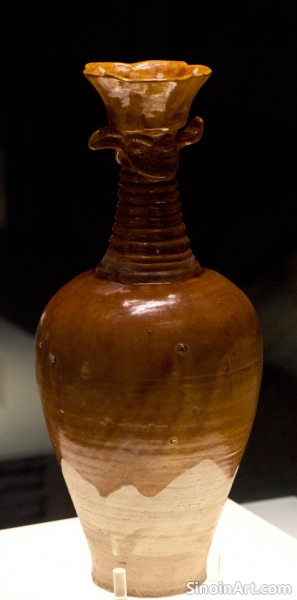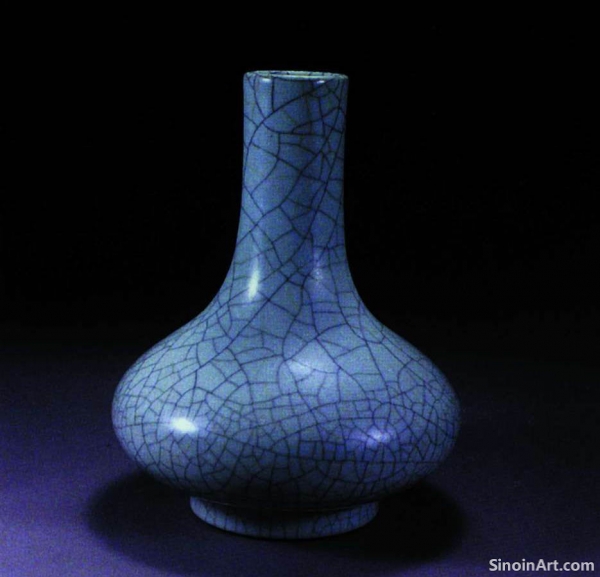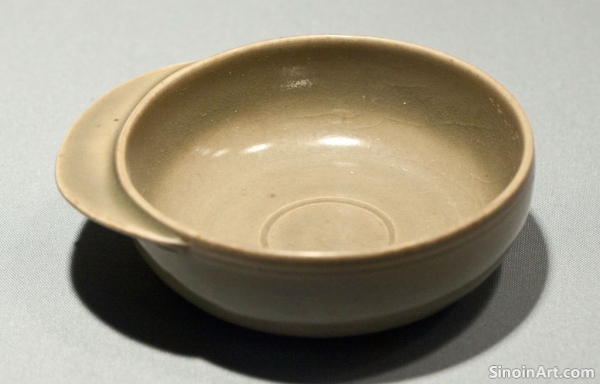The Influence of Tea Culture on Song Ceramics
|
The flourishing tea culture of the Song Dynasty had a significant influence on the development of ceramic forms and styles. The increasing popularity of tea, especially the powdered matcha style, led to the creation of specialized bowls, teapots, and other utensils. The importance of tea culture had a direct impact on the shapes and decoration of Song ceramics.  Jian tea bowls, with their deep, conical forms and their “hare’s fur” glazes, were specifically designed to enhance the experience of drinking tea. The dark colors of the bowls provided a striking contrast to the green of the matcha, and the shape of the bowl helped to maintain the warmth of the tea. The Jian bowls are specifically designed for the tea ceremony of the era.  Other types of bowls, such as those from Ding and other kilns, were also used for tea, each with their own unique aesthetic and functional qualities. The design and form of a tea bowl was vital to the tea-drinking experience. There are many styles of bowls made for different uses and occasions.  The influence of tea culture on Song ceramics also reflects the overall emphasis on simplicity, elegance, and mindfulness that characterized the aesthetic ideals of the period. The ritual of the tea ceremony was an important part of Song culture. The art and the ritual went hand in hand. The enduring legacy of the tea culture on Song ceramics is evident in the continued appreciation for these pieces. The tea bowls and other related objects are highly valued and seen as masterpieces of the ceramic arts. The legacy of tea remains influential today. |
Tag : Song tea bowls, Tea culture, Jian ware, Chinese ceramics, Song Dynasty
Related information
- The Elegance of Guan Ware and Ge Ware Crackle Glazes
- Song Dynasty Ceramics and the Tea Ceremony
- The Delicate Beauty of Ru Ware Porcelain
- The Refinement of Song Ceramics: An Introduction
- The Elegance of Ding Ware: White Beauty
Guan ware and Ge ware, both associated with the Southern Song Dynasty, are known for their distinctive crackled glazes, which were caused by the different contraction rates of the glaze and the ceramic body. These wares, which are also often referred to as “crackled ware”, exhibit a wide variety of crackle patterns, from fine “fish roe” patterns to more pronounced “ice crackle” patterns.
The Song Dynasty saw the flourishing of tea culture, and ceramics played a central role in the rituals and practices surrounding tea consumption. Specific types of tea bowls, teapots, and other tea wares were developed to enhance the tea-drinking experience. The ritualistic elements of tea consumption made the ceramic pieces important elements of daily life in the Song period.
Ru ware, produced for a short period during the late Northern Song Dynasty, is among the rarest and most highly valued of all Chinese ceramics. Known for their delicate bluish-green celadon glaze, often described as the color of "sky after rain," Ru ware pieces are celebrated for their understated elegance, simple forms, and subtle crackle patterns. They are highly sought after by collectors and admired for their timeless beauty.
Song Dynasty ceramics (960-1279) represent a golden age of Chinese pottery, marked by refined techniques, elegant forms, and a focus on monochrome glazes like celadon, showcasing subtle beauty and technical mastery.
Ding ware, a highly prized Song Dynasty white porcelain, is known for its fine, thin body, smooth ivory-white glaze, and delicately carved or impressed designs, embodying the Song preference for simple elegance and refined craftsmanship.